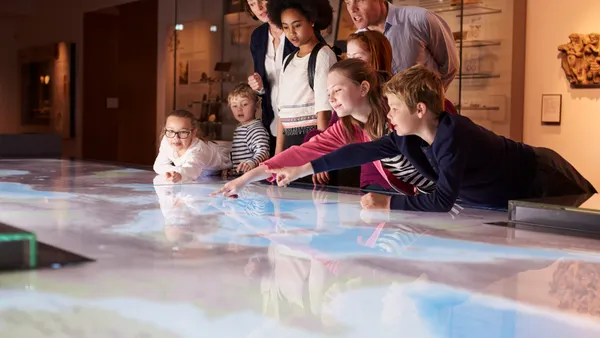Dive Brief:
- In her English classroom, Hawaii middle school teacher Jill Fletcher uses a form of assessment called a one-pager, in which students can show what they’ve learned about a specific subject in a creative way, she wrote in Edutopia.
- Using a piece of printer paper, Fletcher's students are asked to combine a mix of writing and drawing to explain their understanding of a concept or main idea. It's up to students to decide how their one-pagers look and how they answer the prompt, Fletcher writes.
- One-pagers can also be used in subjects like math, Fletcher says, and this type of assessment stresses that it's not about finding the right answer, but about crafting a solid response that leads them there. It also lets students showcase their individuality while emphasizing that there's no such thing as a "perfect" one-pager.
Dive Insight:
Assessments are part of the educational process that teachers and administrators cannot avoid. However, there's been an increasing shift away from the traditional multiple choice exams and toward more flexible options to evaluate a student's degree of mastery of a certain subject – or, in some cases, their proficiency in soft skills – without having to bubble in letters on a rigid form.
In several cases, educators are turning to art to help students explain more abstract elements of a subject area in a more creative, individualized way. When it comes to English language learners, for example, allowing for drawing or creating of projects can help teachers see what a student has or hasn't understood thus far, as standardized tests don't usually provide accurate measures of their capabilities.
“Project options that require less language production give English learners opportunities to show what they know,” wrote Common Sense Education’s Erin Wilkey Oh. “Provide students with limited English a chance to be successful and demonstrate learning through visual media projects -- drawing, animation, video, photography, collage, and more.” Art, she says, is a universal language that makes way for students to showcase their cultures and identities while posing less pressure to assimilate.
Additionally, Tom Meyer of the State University of New York argues in a 2013 paper that mixing drawing and writing can help students do more than just reveal the skills they’ve learned — it may also express their feelings about the learning process as a whole. And it's not just students who profit – educators, he says, can learn from and reflect on students' expressions and interpretations of a particular assignment.
“There are many reasons to redraw the lines about effectiveness and to incorporate art into the assessment process—art supports thinking, writing, and, potentially, learning for everyone involved,” he wrote. “Asking students to draw, write, and talk about their experience learning acknowledges students as stakeholders in education who have a deep seated knowledge and interest in the conditions of school and aspirations for their own educational progress.”












